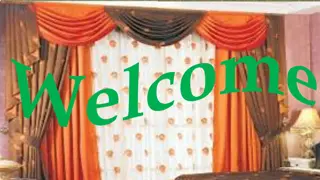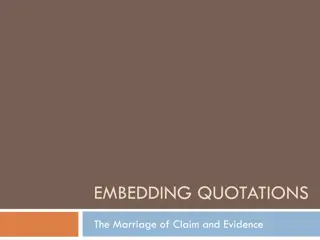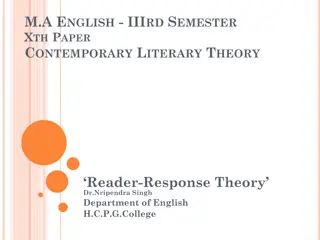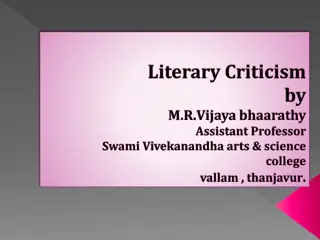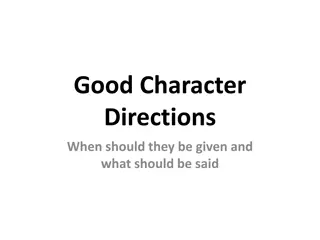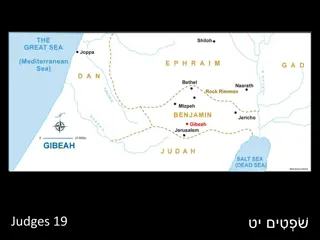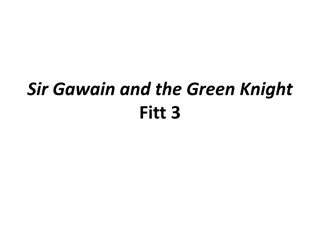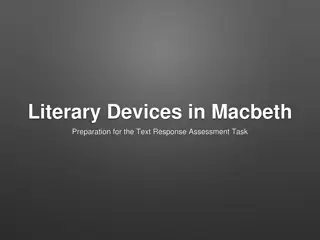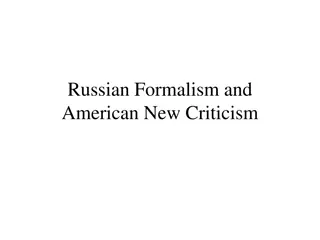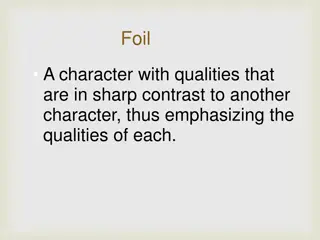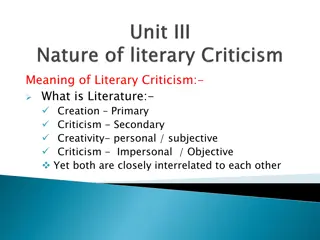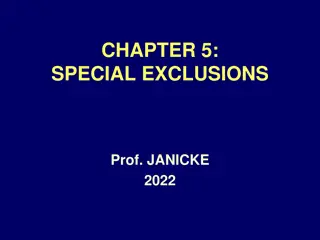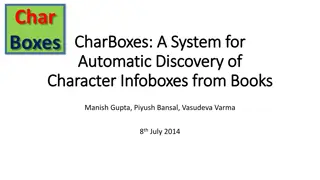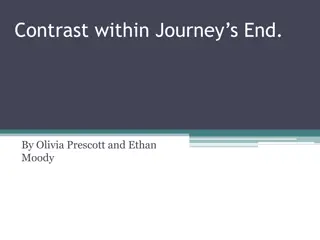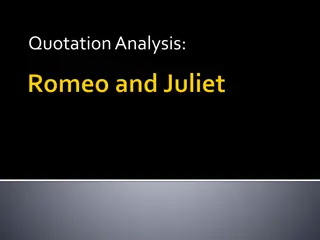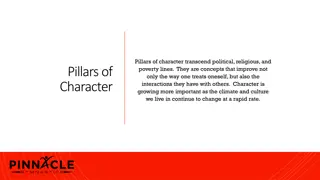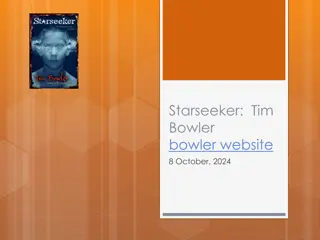Literary Foils: Character Contrasts and Development
In literature, a foil is a character whose traits contrast with another, often the protagonist, to highlight specific qualities. Explore the concept of foils in storytelling and analyze main characters and their foils. Delve into questions, character dynamics, and societal values through reading chapters and engaging in discussions. Uncover the importance of social values and how they shape narratives and character interactions.
Download Presentation

Please find below an Image/Link to download the presentation.
The content on the website is provided AS IS for your information and personal use only. It may not be sold, licensed, or shared on other websites without obtaining consent from the author.If you encounter any issues during the download, it is possible that the publisher has removed the file from their server.
You are allowed to download the files provided on this website for personal or commercial use, subject to the condition that they are used lawfully. All files are the property of their respective owners.
The content on the website is provided AS IS for your information and personal use only. It may not be sold, licensed, or shared on other websites without obtaining consent from the author.
E N D
Presentation Transcript
10/6, ______________________pages___to-___ In literature, a foil is a character that has characteristics that oppose or are opposite to another character, usually the protagonist. The foil character may be completely opposite to the protagonist, or very similar with one key difference. The foil character is used to highlight some particular quality or qualities of the main character. In your book describe your main character s foil OR, if there is no foil, what would that character be like?
Friday: Speaking & Listening Pose a question. Respond to a question. Use the book (page number) when responding to or posing a question. Use a classmate s name to connect to or clarifying a response or question.
Read chapter 4, 49-68 and respond to 3 questions 1. How much time has passed since Gabi s quinceanera? 2. Culturally, the Mayan do not believe in land ownership, but the Latinos do. What is the pattern of the Latinos with regard to the Mayan land? 3. List three tactics the soldiers used against the Indios to intimidate them or get information? 4. What strategies did Gabi s canton do to protect themselves? 5. How did the soldiers respond to the Indios manner of self protection? 6. How have the social values of Gabi s canton changed from the beginning to the end of chapter 4? 7. Write one question you d like to ask your classmates?
Chapter Five, 69-82 Define the following terms: 1. What social value is most important in this chapter? Altruism, cooperation, competitiveness, individualism, aggression give evidence 2. Why did the soldiers attacked Manuel and the students? 3. What did Gabriela notice about two of the soldiers 4. What skill from chapter one saved Gabriela s life? How is it different? 5. Write one question for the class.
Social value orientations Societies are peaceful or violent to the extent that the people and leaders share the same social values or what is important to the community. Sociologists have determine five basic values that all societies have, but most societies have a dominant one. Altruistic: Desire to maximize the welfare of the other or being generous, charitable, giving Cooperative: Desire to maximize joint outcomes or working with others to meet needs or bring about change with shared knowledge and trust Individualistic: Desire to maximize own welfare with no concern of that of the other Competitive: Desire to maximize own welfare relative to that of the other Aggressive: Desire to minimize the welfare of the other Quick Write; Put these into order of importance for the United States 1 being the most important value. Give examples to support your answer.
9/15 The purpose of this notebook is for you to really show me a range of reading skills. These are the one I can see from your responses: Write evidence from books to support your analysis and reflection (W.7.9). To talk about what the text says (RL.7.1) To talk about what the text doesn t say but what it might mean or be getting at (RL.7.1) To talk about the theme and how it develops in the book (RL.7.2) To talk about how elements of the story interact - -like how the setting shapes the character or how the character creates conflict. (RL.7.3) To talk about the language the author uses to great images or emotions (RL. 7.4) To show me that you can read and understand literature in grades 6-8 text complexity (RL.7.10). Keep doing the ones listed above and try some new ones for the next time I check the notebook. Peace, Dr. Donovan
9/15 The purpose of this notebook is for you to really show me a range of reading skills. These are the one I can see from your responses: Write evidence from books to support your analysis and reflection (W.7.9). To talk about what the text says (RL.7.1) To talk about what the text doesn t say but what it might mean or be getting at (RL.7.1) To talk about the theme and how it develops in the book (RL.7.2) To talk about how elements of the story interact - -like how the setting shapes the character or how the character creates conflict. (RL.7.3) To talk about the language the author uses to great images or emotions (RL. 7.4) To show me that you can read and understand literature in grades 6-8 text complexity (RL.7.10). Keep doing the ones listed above and try some new ones for the next time I check the notebook. Peace, Dr. Donovan
Reading Response #5 9/2, title, pages: start -- ended
List of Responses A. Talk about subjects/topics. B. Intertextuality- ideas and images across books C. Story elements D. Recalling details E. Human connections F. Opinion G. Language (see author s craft/figurative language) H. Evaluation I. Alternative Responses.
A. Subjects/Topics the Book Explores Talk about a topic your book explores (depression, gender, culture, racism) and do some additional research on it. Tell us what you found out. List the topics the book explores and talk about if the author is relying on stereotypes or exploring this in a fresh or unexpected way. What is the author s message about these topics? What is he/she trying to teach readers?
B. Intertextuality (between and across texts) Talk what images or topics are coming up again and again in the books you are reading. How are they similar? How are they different? Talk about characters types that seem similar in different books? How are they similar and different? Why do authors use that type of character? Provide specific examples. Talk about older/wiser characters in different stories. Do you notice the gender, age, kinds of advice they give? Provide specific examples. Talk about parents in different texts. Do you notice the father is usually present or absent? What about the mother? Why is that?
C. Story Elements Describe an interesting or important character in your story. What makes him/her so? Write about your favorite part so far and why it is important in the story. What is theme or message about life is the author exploring and how is he/she doing this? Compare two characters in the book to each other by describing their similarities and differences. Compare a character in your book to a character in another book you ve read.
D. Recall Draw a picture of the protagonist including objects of importance to him/her. Draw a picture of an important setting and talk about why the author chose this setting? What would happen to the plot if the setting changed? List the characters and talk about how they are connected to each other.
E. Human connections How is this book similar to another you ve read by this author? How is the character in this book similar to the protagonist in another book? What feelings does this book stir in your? How and why? Which character in this book would you most like to be or be friends with? Why? If you were a character in this book, how would it affect the plot? How does this book remind you of yourself, people you know, or something in the world? How does what is happening in this book stretch your thinking about yourself, others, and the world?
F. Opinion Why do you think the author chose the opening line he or she did? Include the line. What do you think is the most important scene in the book? Why? How would a different setting affect the story? Was the cover design effective? Did it make you want to read the book? Create a new cover and say why it is more effective. Do you agree with the point the author is making about life? Are people really like this? Why? Do you like the ending of the book? Why or why not? Do you think there is more to tell?
G. Language Copy a sentence from the book that you think is well-written. Why do you like this sentence? What makes it effective (figurative, sensory, moving, truth)? Explain. Find examples of figurative language. List them. Describe the author s craft (flashback, dialogue, embedding genres). What is good about the author s writing? What things might you try in your own writing that you ve learned from this author? Describe how the author makes you feel through their writing.
H. Evaluation What did you learn about the time in which the story took place? Write about an important lesson that was learned in the story by the character that you can apply? Write about the older and wiser characters and why the author needed those characters in the story. Explain why you think that your book is popular or unpopular with students your age or in the class. Describe what you would change about the book if you could rewrite it. Explain what you want to remember about this book and why? Make a list of lingering questions you ve had after finishing this book.
I. Alternative Responses Write a book commercial to convince others to read this book (no spoilers). Write a eulogy or speech honoring the death of one of the characters. Create a slogan for the book and explain why you chose this. Illustrate a book cover different for what is on the book and talk about your choices. Pretend you are the author and write a proposal for the sequel of the book. Give three reasons why we should read this book as a whole class. Write a theme song for this book. Choose a character of the book and decide on an appropriate birthday present for him/her and explain why. Discuss a portion of the book that was too predictable. Make a list of characters and then create a cast of famous people to portray them in the film adaptation. List 10 interesting words from the book and tell why each is interesting or write a definition of each word.
Authors Craft Text (blocks, bolds, cross outs, prose, poem) Flashback: stop in the action of the store to go back may answer or pose questions Chapter titles or not: may be theme related Embedding other genres: letters, new reports, tweets, texts,diary, verse Dialogue: moves the plot, adds information, shows the characters Suspense: keeping information from you Older/Wiser character: the use of one of these to support/guide the character Point of view shifts: different narrators to show perspective Again and Again/symbol to point to layers of meaning and emphasize an idea Reliable/unreliable narrators: can we trust the narrator (depression, crazy, young, too old) Aha moments: realizations, discovery Sub headings to organize ideas or events Memory moments: the character either thinks or tells a story from the past Intrusion speaking directly to the reader Characterization: Characters; thought, actions, speech, dress, how others feel and react
Figurative Language Simile: A figure of speech comparing two unlike things that is often introduced by like or as. Metaphor: Comparing two things by using one kind of object or using in place of another to suggest the likeness between them Personification: the object or animal SEEMS like it is doing something human Allusion: A brief reference to a person, place, thing of historical, literary, or political significance, assuming the reader knows it and its importance. You are Hulk before you eat breakfast. The sun is like a yellow ball of fire in the sky The stuffed bear smiled as the little boy hugged him close. Her hair was silk. Assonance: A resemblance of vowel sound in words or syllables Alliteration: The repetition of initial consonant sounds in two or more neighboring words. Consonance: repetition of the same consonant sound in two or more words in the middle of the words: Anaphora: repetition of a word or phrase at the beginning of successive sentences. The stony castle is owned by Jone. (o) The wild woolly walrus I have a dream that I have a dream that All mammals named Sam are tame. (m) Onomatopoeia:Naming a thing or an action by imitating the sound associated with it Hyperbole:Big exaggeration, usually with humor Understatement: giving less importance or minimizing the passion towards a subject that it really deserves Pun: a joke that is a play on words that have similar meanings mile-high ice-cream cones buzz, hiss, roar, woof I was struggling to figure out how lightening worked, and then it struck me. Symbol: an object that represents many layers of meaning often hidden by its literal use I am happy I won a million dollars. Anthropomorphism: the object or animal is doing something human Clich :A word or phrase that has become overly familiar or commonplace Idiom:The language peculiar to a group of people It s raining cats and dogs. No pain, no gain Puss in Boots, Sponge Bob, Winnie the Pooh New dawn might mean a new day, but it can also mean a new beginning or another chance.
Poem Forms Haiku: 3 lines, 17 syllables, 5-7-5; many themes (Japanese) Sonnet: expressive of thought; 14 lines, 10 syllables each, ababcdcdefefgg Villanelle: 19 lines; 5 tercets followed by a quatrain: two lines repeat throughout Free verse: written with rhymed and unrhymed vers ethat has no set meter Tanka: 5 lines and 31 syllables, 5-7-5-7-7 (Japanese) Sijo: 3 lines, 14-15 syllables each, 44-46 total (Korean) Confessional: personal poem of self revelation; reveals deep thoughts Elegy: a serious poem typically about death, no rhyme or meter pattern Ode: a poem that celebrates an object in a serious way by talking to it no set meter or rhyme- Limerick- funny poem with a strong beat; nonsense; 5 lines, aabba Quatrain: a stanza or a complete poem of four lines with some rhyming patter: aabb, abab Apostrophe to talk to an object or absent person Echo: the last word or syllable in a line is repeated or echoed underneath to form a rhyming line Lyric a poem that expresses personal and emotional feelings Tercet: a stanza or complete poem of three lines- aba, aaa Couplet: a stanza or complete poem of two rhyming lines: aa


